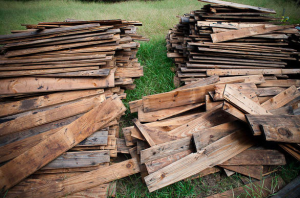A friend relocated his wine store near my house. As I walked by the new location recently, I peeked in the storefront window to see the progress. I was encouraged to see the designer had embraced the many opportunities that material reuse provides: I saw a tastefully designed interior with salvaged windows highlighting the aesthetic. Although credit goes to the designer, the store’s owner told me the idea came after he walked through the local Habitat for Humanity ReStore, where salvaged building materials are sold for a fraction of retail prices.

Challenges and Opportunities
Working in the design and construction industry, I often see large amounts of waste that could benefit others being sent to landfill simply because the routine for the industry is to do things the way it has always done them. What if we were to think outside the box in the construction industry and embrace some ancient techniques again?
Many of us already are recycling and reducing waste, which is fantastic. However, deconstruction for reuse is by far the most sustainable opportunity and can add the most significant value. Deconstruction and reuse help to reduce waste, conserve budgets, protect the environment and save our increasingly limited natural resources. Already manufactured, used and removed materials have a quality and embodied energy that simply should not be wasted. Although typically it is the last thing we think about, if we could plan ahead for deconstruction, we could yield as much as 80 percent diversion from landfills.
Another benefit of deconstruction is, in most cases, it provides property owners with significant tax deductions. For municipalities that do not have a tax liability, the tax credits often can be transferred to the designer or contractor.
Deconstruction and reuse also are recognized as promising green-economy and job-growth opportunities. Although it may take two or three workers and some heavy equipment a few days to demolish a building, deconstruction could create jobs for perhaps six to 10 workers who carefully deconstruct a building.

